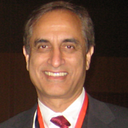The One Observer Theorem
The deep secret of consciousness
If we live in a world governed by scientific law, then these laws should be universal. Thus, gravitation and magnetic force work the same everywhere.
The same should be true of consciousness.
We humans — as well as animals — are different and unique individuals, so how do we find the universal basis to our personal consciousness?
Academic AI researchers and neuroscientists believe that it is the complexity of interconnections in the neural networks of the brain that gives rise to consciousness.
Then, in the above two brain circuits, if the left circuitry has the complexity to generate one consciousness, the right circuitry will produce two consciousnesses.
The brain, in which only a small fraction of the neural network is used in relation to conscious experience at any moment, will be a chaotic maze where one consciousness is followed by another, or where disparate consciousnesses coalesce. Or worse, there will be a blinding dance of innumerable, incoherent lightning strikes going off.
None of this is true for it is contradicted by our personal experience.
So, is reality unknowable and our methods of inquiry incomplete?
The theory that network complexity leads to emergence of consciousness appears to be wrong even though brain circuitry plays a fundamental role in awareness.
The paradox
The aware or conscious state requires a brain to translate mental activity into experience. But the existence of the brain and other bodies is predicated on the phenomenon of consciousness.
We perceive the universe in our consciousness, but the conscious mind cannot exist unless there are appropriate brain circuits.
This appears to be a circular and unresolvable paradox: conscious awareness is dependent upon the body; but the existence of the body can only be apprehended in consciousness. Everything is entangled at the deepest level: body and consciousness; subject and object; time and space.
The paradox arises from the implicit assumption that consciousness is a property of matter.
A resolution
My One Observer Theorem provides a resolution to the above paradox.
It is a mathematical theorem that starts with broadly accepted assumptions about computation and proves:
1. A machine will never be conscious.
2. There is only one observer.
The first claim is comforting for really, we do not wish computers to be conscious.
The second claim on there being only observer satisfies the scientific condition of universality.
But if Person A and Person B are each unique, what does one mean by the existence of just one observer? It means that the conscious gound for both is the same.
It does not contradict the personal experience of one person being different from another’s, because our personal experience is simply the contents of consciousness, which are indeed varied without affecting the universality condition.
Reference
S. Kak, No-Go Theorems in Machine Consciousness. Journal of AI and Consciousness, Vol.10, pp.. 237–247, 2023.
